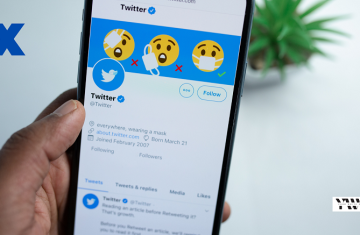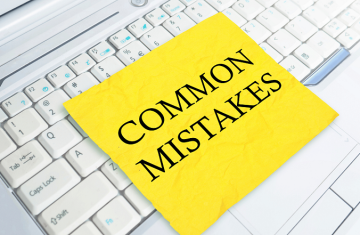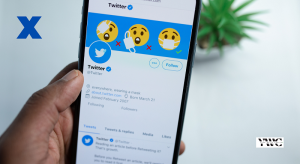You’ve spent all available resources on crafting the perfect product or service. It solves a problem and it makes a difference, even. Yet you wonder what your product is preaching and if people can hear it well enough.
It’s safe to say we all, consciously or subconsciously, wonder what people think of what we do or what we want to do. It’s why we check reviews on digital commercial platforms. In this scenario, integrating customer stories in your marketing campaign is the game-changer.
Marketing campaigns thrive on authenticity, and nothing speaks to this more than real customer stories. When utilized effectively, these narratives can elevate your brand’s trustworthiness, humanize your product, and create a deep emotional connection with your audience.
Every business, in one way or the other, uses customer stories. This is because customer stories serve as a bridge connecting your audience to your product or service. Your marketing campaign or pitch without customer stories is like making soup without seasoning and spice… bland. This is why it should be one of your business’ greatest assets.
Why Customer Stories Matter
Customer stories offer a unique perspective that traditional marketing messages can’t. According to Nielsen, 92% of consumers trust recommendations from individuals over brands, even if they don’t know them personally. This makes customer stories a powerful tool in your marketing toolbox.
When customers share their experiences, it brings authenticity that polished brand messages may lack. These stories can showcase real-world applications of your product or service, demonstrate value, and build trust. Moreover, they create relatability; potential customers can see themselves in the stories of others.
Crafting Authentic and Engaging Customer Stories
Here’s a guide on how to effectively use customer stories in your marketing campaign:
1. Identify the Right Customers
Not every customer story will resonate with your target audience. The key is to identify customers who represent your ideal buyer personas and whose stories align with your brand values. Choose customers with unique or compelling journeys. Look for those who have overcome significant challenges or achieved notable success using your product.
2. Conduct In-Depth Interviews
To extract genuine stories, conduct in-depth interviews that allow customers to share their experiences in their own words. Ask open-ended questions that encourage customers to provide detailed responses.
For example, “What problem were you trying to solve when you found our product?” or “How has our product changed your daily operations?”
3. Narrating the Story
Once you’ve gathered the raw material, it’s time to craft a narrative that is both engaging and relatable. The key is to maintain the customer’s voice while aligning the story with your brand message. Follow a classic storytelling arc—begin with the problem, introduce the solution (your product), and conclude with the outcome.
Incorporate visuals, such as before-and-after photos, video testimonials, or infographics, to enhance the story’s impact.
Follow Up
Maintain healthy relationships with customers whose stories you’ve used. Update their stories if they achieve new successes with your product. Consider offering incentives, discounts, or recognition to customers who provide compelling stories.
You May Also Like:
How to Use Storytelling in Marketing to Close Sales
How to Measure the Impact of Storytelling in Marketing
Integrating Customer Stories Across Different Marketing Channels
Website
Your website is the perfect platform to showcase customer stories. Create a dedicated section for case studies or testimonials. You can also incorporate snippets of these stories across various pages, like your homepage, product pages, or blog posts.
- SEO Optimization: Optimize these pages with relevant keywords to improve search engine rankings. For example, “customer success stories in [industry]” can help attract organic traffic.
- Interactive Elements: Use interactive features, such as sliders or click-through galleries, to make the stories more engaging.
Social Media
Social media platforms are ideal for sharing customer stories due to their shareable nature. Leverage platforms like Instagram, LinkedIn, and Twitter to reach a wider audience.
- Short-Form Content: Create bite-sized versions of customer stories tailored for social media, such as Instagram Stories or LinkedIn posts.
- Hashtags and Mentions: Use relevant hashtags and tag customers (with their permission) to increase visibility and credibility.
Email Campaigns
Incorporate customer stories into your email marketing campaigns. These stories can be part of a series, offering readers regular insights into how others are benefiting from your product.
- Segmentation: Tailor stories to different segments of your email list based on their interests or buying behavior.
- Call-to-Action: Include a strong call-to-action that encourages recipients to share their own stories or take the next step in their customer journey.
Video Marketing
Video content is highly effective for storytelling. According to Wyzowl, 84% of people say they’ve been convinced to buy a product or service by watching a brand’s video.
- Testimonial Videos: Feature your customers in video testimonials where they discuss their challenges and how your product helped them.
- Documentary-Style Stories: Create longer, documentary-style videos that dive deeper into the customer’s journey, offering a more comprehensive view of their experience.
Common Pitfalls and How to Avoid Them
Over-Editing the Story
While it’s important to make the story cohesive, over-editing can strip away authenticity. Keep edits minimal and ensure the customer’s voice remains intact.
Focusing Only on Success
It’s tempting to only highlight success stories, but this can make your brand seem disconnected from reality. Showcasing stories where challenges were faced and solutions found, even if not perfect, can build more trust with your audience.
Ignoring Metrics
While storytelling is about connection, it’s also crucial to measure the impact of these stories on your marketing goals. Tools like Google Analytics or social media insights can help track engagement and conversion rates.
You May Also Like:
10 Ways to Identify Your Brand’s Core Story
Top 10 Brands That Have Mastered Storytelling in Marketing
Storytelling for Startups: How to Standout in a Crowded Market
Conclusion
Using customer stories can make or mar your marketing campaigns and your brand as a whole. Hence, the need to utilize them effectively.
By thoughtfully selecting, crafting, and distributing these stories, you can build stronger connections and trust with your audience. This is because they show your product in action and offer social proof.
Integrating storytelling into your marketing campaign can help you create a more authentic connection with your audience, driving engagement and conversions.
I’m Debbie, “Your Write Choice.” I offer content marketing and ghostwriting services that connects and converts, editing par excellence and peace of mind for my clients. Hire my services.
Download my free storytelling for sales workbook.
Enroll in my “Master Storytelling for Sales Course.”












